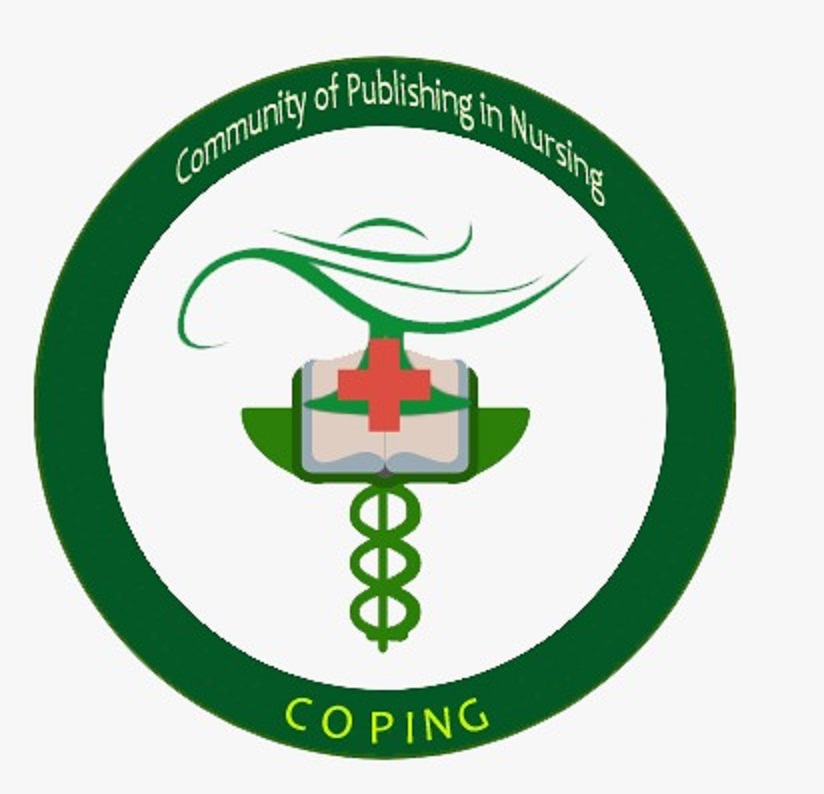EFEKTIVITAS PEDOMAN ‘PEMAHAT ASIK’ TERHADAP PERILAKU ANAK DAN ORANGTUA DALAM MENCEGAH MASALAH STATUS GIZI
Abstract
Prevalensi secara nasional mengenai masalah kegemukan pada anak usia 6-12 tahun masih dikategorikan tinggi. Obesitas akan menyebabkan masalah kesehatan pada anak usia sekolah yaitu sekitar 20-30% anak menderita hipertensi, diabetes meillitus tipe 2, dan sleep apnea. Faktor yang mempengaruhi terjadinya kelebihan berat badan pada anak adalah perilaku makan dan aktivitas fisik. Perilaku makan dan aktivitas dipengaruhi oleh pengetahuan anak, kebiasaan makan, dan faktor lingkungan. Anak yang memiliki aktivitas fisik ringan memiliki faktor risiko 3 kali lebih besar untuk menderita obesitas. Pemberian pendidikan kesehatan dapat meningkatkan pemahaman tentang perilaku makan sehat dan optimalisasi aktivitas fisik. Penelitian ini bertujuan untuk menganalisis efektivitas penerapan pedoman perilaku makan dan aktivitas fisik terhadap perilaku pencegahan obesitas. Metode penelitian menggunakan pre experimental dengan desain one group pretest-posttest design. Populasi dalam penelitian ini adalah orangtua siswa kelas 4-6. Teknik pengambilan sampel dilakukan dengan cara probability sampling yaitu total sampling. Penelitian ini menggunakan kuesioner yang disusun oleh peneliti dengan modifikasi dari Food Frequency Questionnare dan Adolescent Sedentary Activity Questionnare. Analisis bivariat dilakukan dengan uji nonparametrik Wilcoxon Test. Hasil penelitian menunjukkan p-value < 0,05 sehingga pemberian pedoman perilaku makan sehat dan aktivitas fisik efektif terhadap perubahan perilaku anak dan orangtua dalam mencegah masalah status gizi. Pihak sekolah diharapkan dapat memberikan edukasi secara rutin kepada siswa agar masalah status gizi dapat teratasi.
Downloads
References
Aisah, S., Ismail, S., & Margawati, A. (2021). Edukasi Kesehatan dengan Media Video Animasi: Scoping Review. Jurnal Perawat Indonesia, 5(1), 641–655.
Al-lela, O. Q. B., Bahari, M. B., Salih, M. R. M., Al-Abbassi, M. G., Elkalmi, R. M., & Jamshed, S. Q. (2014). Factors underlying inadequate parents’ awareness regarding pediatrics immunization: findings of cross-sectional study in Mosul- Iraq. BMC Pediatrics, 14, 29. https://doi.org/10.1186/1471-2431-14-29
Asmuji, & Zain, F. (2018). Promosi Kesehatan: untuk Perawat di Rumah Sakit dan Puskesmas (1st ed.). Pustaka Panasea.
Bidzan-Bluma, I., & Lipowska, M. (2018). Physical activity and cognitive functioning of children: A systematic review. International Journal of Environmental Research and Public Health, 15(4). https://doi.org/10.3390/ijerph15040800
Carolin, B. T., Saputri, A. R., & Silawati, V. (2020). Analisis faktor yang pempengaruhi status gizi balita (12-59 bulan) di Puskesmas Sukadiri Kabupaten Tangerang Tahun 2018. Jurnal Ilmu Dan Budaya, 41(66), 7835–7846. https://doi.org/http://dx.doi.org/10.47313/jib.v41i66.800
Fadhilah, F. H., Widjanarko, B., Shaluhiyah Bagian Pendidikan Kesehatan dan Ilmu Perilaku, Z., & Kesehatan Masyarakat, F. (2018). Faktor-Faktor Yang Berhubungan Dengan Perilaku Makan Pada Anak Gizi Lebih Di Sekolah Menengah Pertama Wilayah Kerja Puskesmas Poncol Kota Semarang (Vol. 6). http://ejournal3.undip.ac.id/index.php/jkm
Głąbska, D., Guzek, D., Mellová, B., Zadka, K., Żywczyk, K., & Gutkowska, K. (2019). The national after-school athletics program participation as a tool to reduce the risk of obesity in adolescents after one year of intervention: A nationwide study. International Journal of Environmental Research and Public Health, 16(3). https://doi.org/10.3390/ijerph16030405
Hamzah, Hasrul, Hafid, A. (2020). Pengaruh Pola Makan Terhadap Status Gizi Anak Sekolah Dasar. Jurnal Keperawatan Muhammadiyah, 5(2).
Harahap, H., Sandjaja, & Karlina, N. C. (2013). Pola Aktivitas Fisik Anak Usia 6,0-12,9 Tahun di Indonesia. Gizi Indon, 36(2), 99–108.
Hockenberry, M. J., & Wilson, D. (2011). Wong’s Nursing Care of Infants and Children, 9e. Mosby.
Johns Hopkins Medicine Health. (2014). School-Aged Child Nutrition - Johns Hopkins Medicine Health Library.
Listiadesti, A. U., Noer, S. M., & Maifita, Y. (2020). Efektivitas Media Vidio Terhadap Perilaku Cuci Tangan Pakai Sabun Pada Anak Sekolah: A LITERATURE REVIEW. Jurnal Menara Medika, 3(1). https://jurnal.umsb.ac.id/index.php/menaramedika/index
Puspita, L. M., & Utami, K. C. (2020). Sedentary Behaviour pada Anak Usia Sekolah di Kecamatan Denpasar Timur. Community of Publishing In Nursing, 8(2), p-ISSN.
Putri, R. A., Shaluhiyah, Z., & Kusumawati, A. (2020). Faktor-Faktor Yang Berhubungan Dengan Perilaku Makan Sehat Pada Remaja Sma Di Kota Semarang. 8(4). http://ejournal3.undip.ac.id/index.php/jkm
Rahman, N., Dewi, N. U., & Armawaty, F. (2016). Faktor-faktor yang berhubungan dengan perilaku makan pada remaja SMA Negeri 1 Palu. Jurnal Preventif, 7(1), 1–64. https://doi.org/10.1007/978-3-642-27771-9_9052-3
Ramsey, L. S., Watkins, L., & Engel, M. E. (2013). Health education interventions to raise awareness of rheumatic fever: a systematic review protocol. Systematic Reviews, 2(1), 58. https://doi.org/10.1186/2046-4053-2-58
Ritonga, S., Safrida, S., Huda, I., Supriatno, & Sarong, M. A. (2020). The effect of problem-based video animation instructions to improve students’ critical thinking skills. Journal of Physics: Conference Series, 1460(1). https://doi.org/10.1088/1742-6596/1460/1/012107
Scaglioni, S., De Cosmi, V., Ciappolino, V., Parazzini, F., Brambilla, P., & Agostoni, C. (2018). Factors influencing children’s eating behaviours. In Nutrients (Vol. 10, Issue 6). MDPI AG. https://doi.org/10.3390/nu10060706
Shah, N., Mathur, V., Kathuria, V., & Gupta, T. (2016). Effectiveness of an educational video in improving oral health knowledge in a hospital setting. Indian Journal of Dentistry, 7(2), 70. https://doi.org/10.4103/0975-962x.184646
Susilowati, E., & Himawati, A. (2017). Hubungan tingkat pengetahuan tentang gizi balita dengan status gizi balita di wilayah kerja Puskesmas Gajah I Demak. Jurnal Kebidanan, 6(13).
World Health Organization. (2010). Global recommendations on physical activity for health (ISBN 978924159997).
Zamzani, M., Hadi, H., & Astiti, D. (2017). Aktivitas fisik berhubungan dengan kejadian obesitas pada anak Sekolah Dasar. Jurnal Gizi Dan Dietetik Indonesia (Indonesian Journal of Nutrition and Dietetics), 4(3), 123. https://doi.org/10.21927/ijnd.2016.4(3).123-128

This work is licensed under a Creative Commons Attribution-NonCommercial 4.0 International License.







